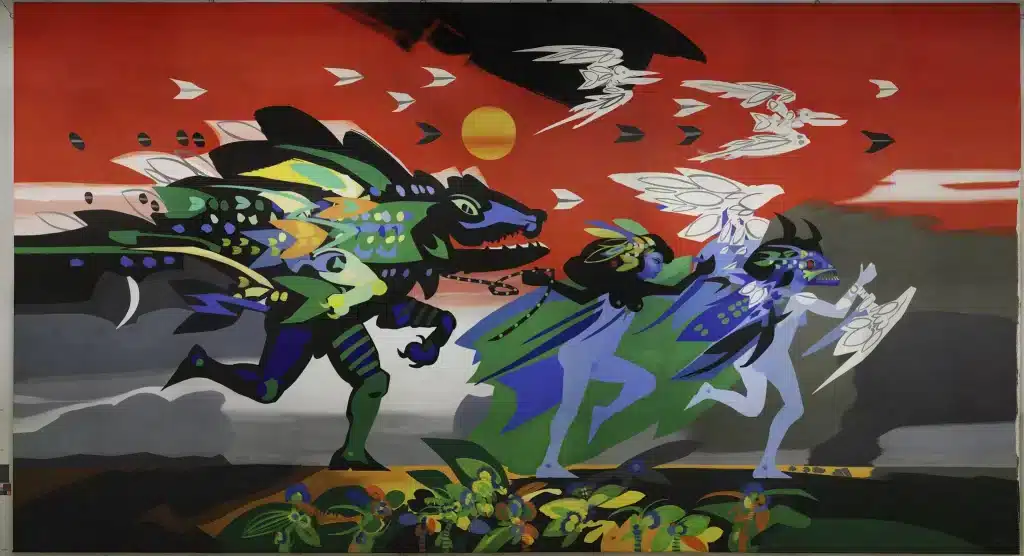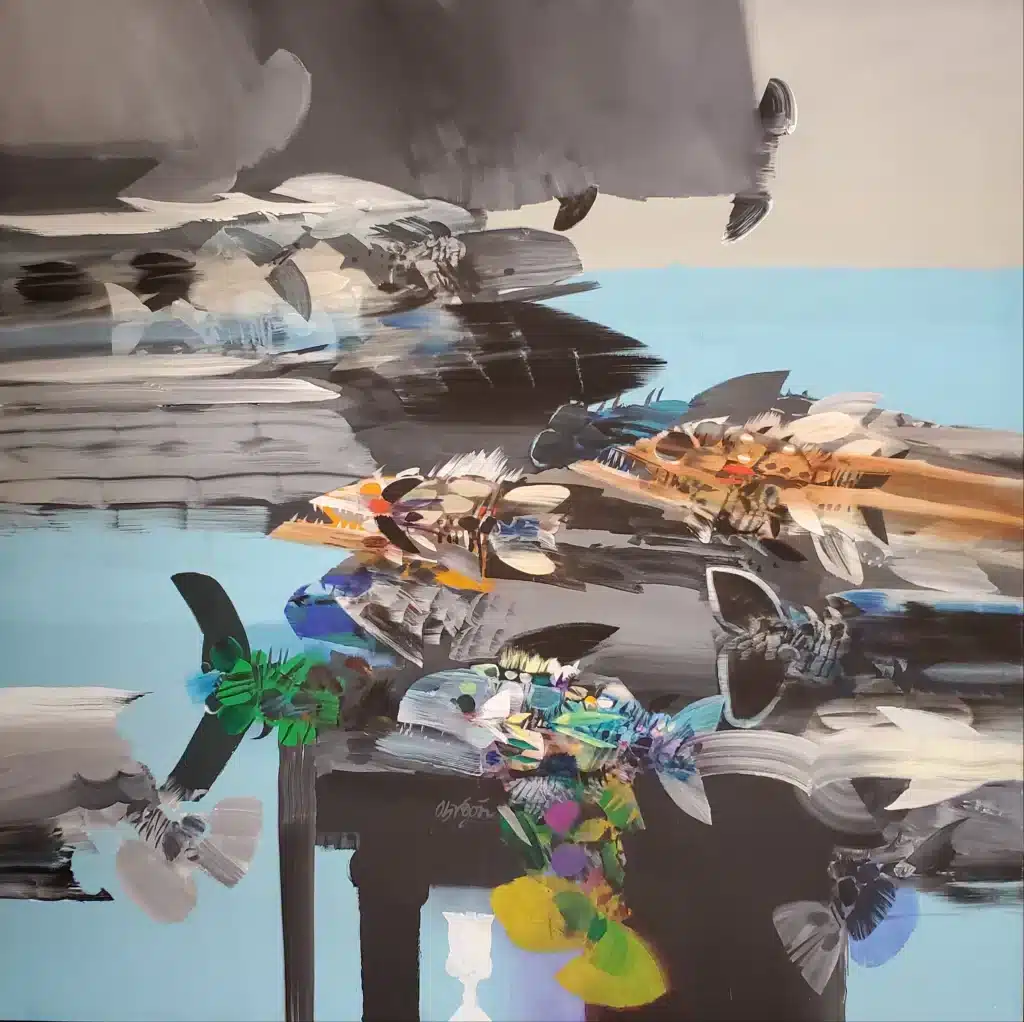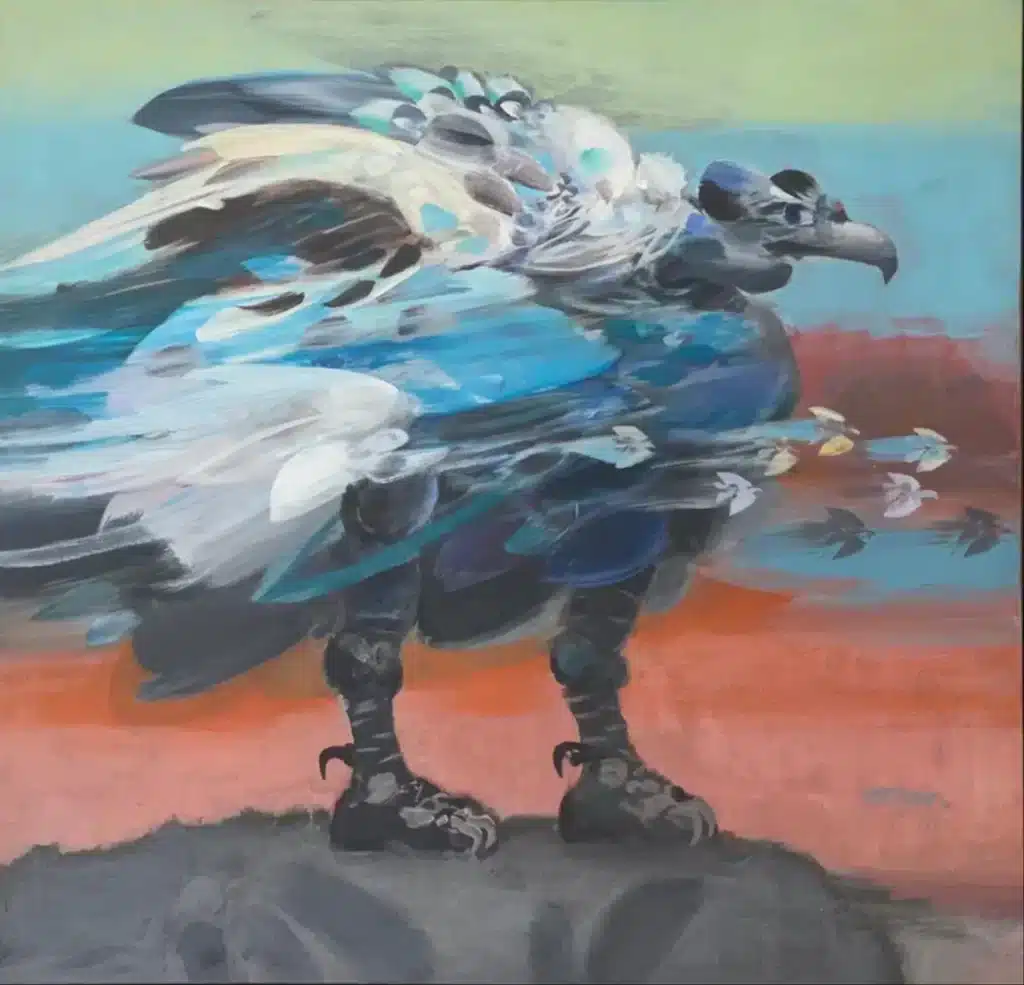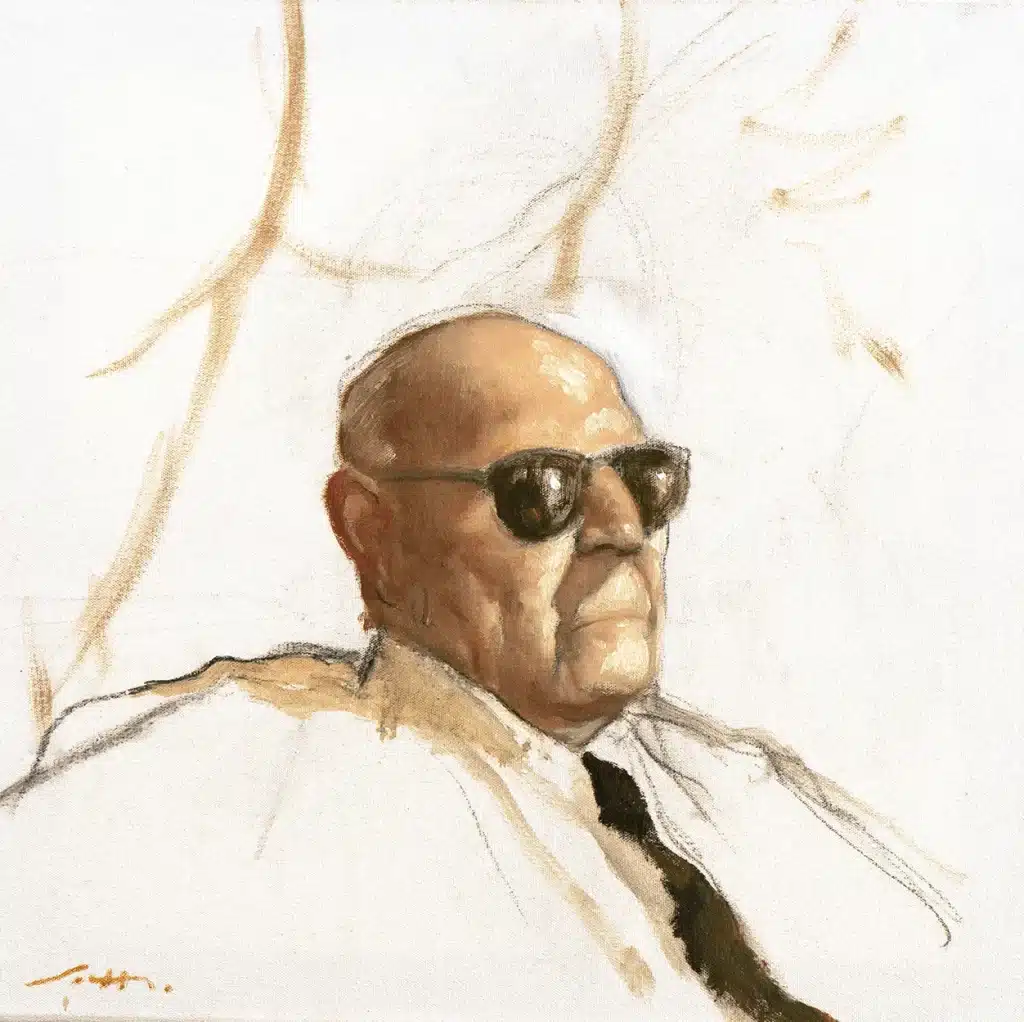Alejandro Obregón was born on June 4, 1920 in Barcelona, Spain; at the age of 16 he moved to Colombia; he studied at the Academia de Bellas Artes in Bogotá and later at the Ecole des Beaux Arts in Paris, where he had the opportunity to immerse himself in the effervescent art scene of the time. Currently, he is remembered as one of Colombia’s most important artists.
Characteristics of his work
He is known for his unique style, which is framed within the informalism movement in Colombia. Throughout his career, he developed a unique technique in which he used free brushstrokes and vivid colors to express his vision of the Colombian landscape and nature. In his work it is very characteristic to find a unique fusion between the figurative and the abstract. His artistic style stands out for the expressiveness of his strokes and the bold use of color, creating vibrant and dynamic compositions.
Alejandro Obregón’s technique reveals a unique look at the relationship between man and nature, as well as a profound introspection on the human condition. His canvases often present human figures in ambiguous situations, inviting the viewer to reflect on universal themes such as loneliness, hope and uncertainty. In addition, the masterful use of light and shadow in his work adds an additional emotional dimension to his creations. His legacy in the history of Latin American art is inescapable, as he managed to capture the very essence of Colombian culture and identity through a unique amalgam of techniques and themes that continue to captivate generations of viewers around the world.

Influence in Paris
Obregón traveled to Paris in May 1949 and this would be a trip that would shake his work, as he approached the works of great painters such as Pablo Picasso and Joan Miró.
The City of Light provided him with a stimulating cultural environment that enriched his artistic vision and inspired him to explore new techniques and styles. During his stay, Obregón came into contact with the avant-garde art movement, which significantly influenced his work and nurtured his creativity to develop his magical expressionism. Obregón returned to his homeland with a renewed perspective and a richer color palette; he began to explore national and Latin American themes, incorporating elements of indigenous culture and folkloric tradition in his works.

Recurring themes
The sea and marine life were recurring themes in many of his paintings. His fascination with nature and his relationship with the ocean are reflected in several of his works. Through majestic landscapes and scenes of Colombian flora and fauna, Obregón expressed his deep respect for the natural environment and its intrinsic link to the country’s identity.

Another recurring theme in his work is the representation of the human figure in ambiguous and emotional situations. His portraits evoke a sense of melancholy and loneliness, inviting the viewer to reflect on the human condition and its deepest emotions. In addition, the theme of travel and migration is also present in his work, where he captures the search for identity and belonging in a world in constant change.
Symbolism and mythology also play a significant role in Obregón’s work. Through symbols and mythological references, the artist explored universal themes such as life, death, rebirth and transcendence.
Obregón addressed violence and war in his works, depicting the horrors of armed conflicts and their impact on society and nature. This theme allowed him to reflect on the fragility of human existence and the need for peace and harmony between human beings and their environment.
But, without a doubt, what fascinated the artist the most were the condors.

In Alejandro Obregón’s work, condors occupy a prominent and recurring place as a symbol of national identity and the connection with nature in Colombia. These majestic Andean birds of prey, representing freedom and strength, appear in his paintings as imposing and enigmatic figures. Obregón painted the condors with a deep respect for their role in the ecosystem and their cultural significance in the region. Through his art, the Colombian painter sought to capture the essence of these iconic animals and convey the importance of preserving biodiversity and natural balance.
They also symbolize an introspection on the human condition. By portraying these birds in often solitary settings and in contemplative attitudes, the artist explored the duality between the grandeur and fragility of human existence. They evoke a sense of transcendence and mystery.
Alejandro Obregón passed away on April 11, 1992, leaving a lasting artistic legacy that continues to inspire new generations of Colombian and Latin American artists. His contribution to abstract art and his unique expression of Colombia’s identity and landscape have made him an icon of the continent’s art.





